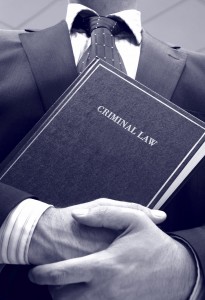How to Draw Up a Motion to Continue
Motion to Continue

Rule 4.260 governs a "Motion to Continue:"
Rule 4.260 lays out the groundwork for when a judge should grant a continuance and when the judge should deny a continuance.
In Writing: Rule 4.260 requires that a motion to continue be in writing unless made in a hearing in open court and signed by the party or attorney requesting the continuance.
State Facts: A motion to continue "shall state the facts that the movant contends entitles the movant to a continuance." In other words, simply asking for a continuance is per se grounds for the judge denying your motion. The motion doesn't have to be lengthy. Instead, it simply has to give the basic facts as to why a continuance is necessary.
First Continuance is Easier: Under the rules your first motion to continue is an easier proposition. According to Rule 4.260 "good cause" is grounds for a continuance.
Additional Continuances are Harder: Under the rules a second continuance can be trickier. Specifically, the rules state that a second motion to continue shall be denied unless the court finds a manifest injustice would otherwise occur if the continuance is denied.
A Motion to Continue in Practice:
Rule 4.260 is often more harsh than reality: Rule 4.260 uses harsh language such as automatic denials of second continuances unless there is a manifest injustice. In theory, most lawyers would probably agree that this language is a bit harsh. Judges are often more relenting when it comes to granting a second continuance than the rules would seem to suggest. However, this is not always the case.
Knowing the Judge: Because the rules are quite strict in theory, it's important to know what the judge's tendencies are. There are a few judges that are more likely to apply a strict interpretation of the rules and deny all second motions to continue. Some judges may even be more strict on what a "good cause" first motion to continue looks like. Knowing how quickly a judge will move the case along is helpful to the lawyer and the client because everyone can have a realistic expectation moving forward. It also helps the lawyer expedite the case and accomplish what is needed within a specific period of time.
Pointers for Defendants:
Hire your lawyer quickly: Many clients proceed with the idea that they will play a wait-and-see game with their case. For example, they view the public defender as a free option that allows them to see what can be done on their case. If the results are undesirable they have the mindset that they can eventually go out and hire someone else and get a whole new crack at the case. They think this will buy them more time and that the new lawyer can come in and push the case out with additional continuances.
However, if you wait too long you may have left your newly hired lawyer with no options and no ability to continue the case further. Some judges will flat out deny a notice of appearance of a newly hired attorney if the Defendant waits too long. Others will accept the notice of appearance but force you to trial or plea with a denial of the motion to continue.
Make sure you know what to expect: Communicate with your lawyer from the beginning. Make sure you understand the judges tendencies and whether a continuance is likely or not likely. Make sure you plan your life and prepare for the time frames that the lawyer gives you. For example, if you are expecting to do a short stint in jail make sure your finances are secured and you have a game plan. Or if you are expecting to do probation with a lot of community service hours, make sure your schedule is reworked so you have time to get everything accomplished quickly once probation actually starts.
Source: https://www.smithandeulo.com/motion-to-continue/

Post a Comment for "How to Draw Up a Motion to Continue"